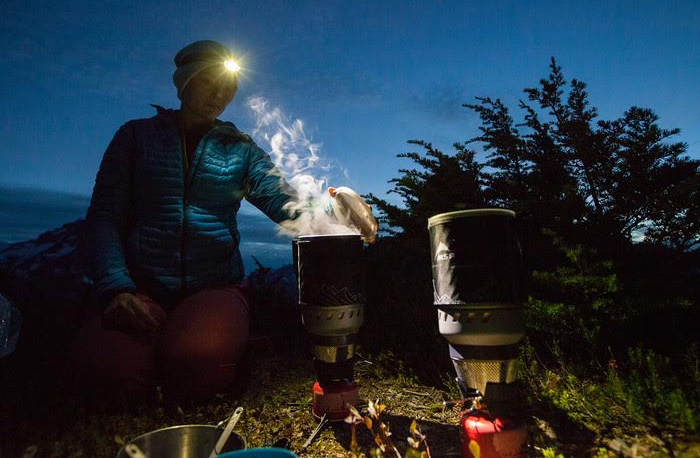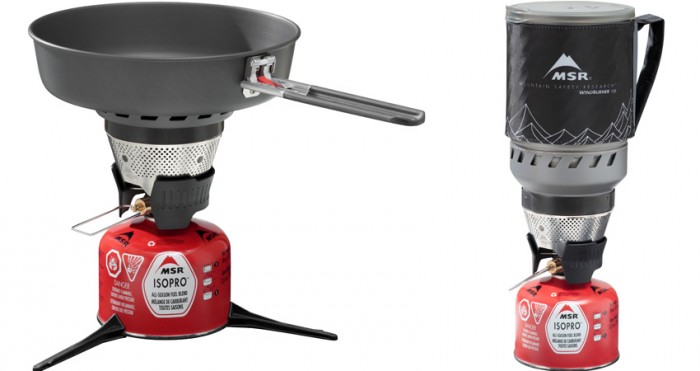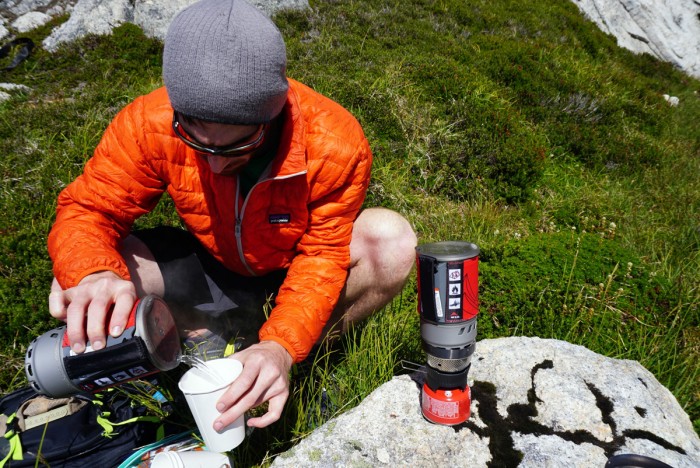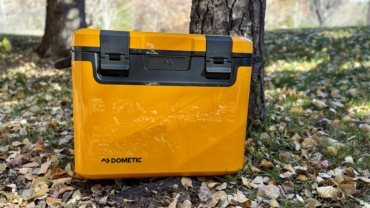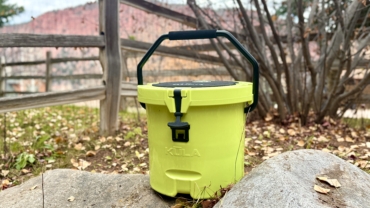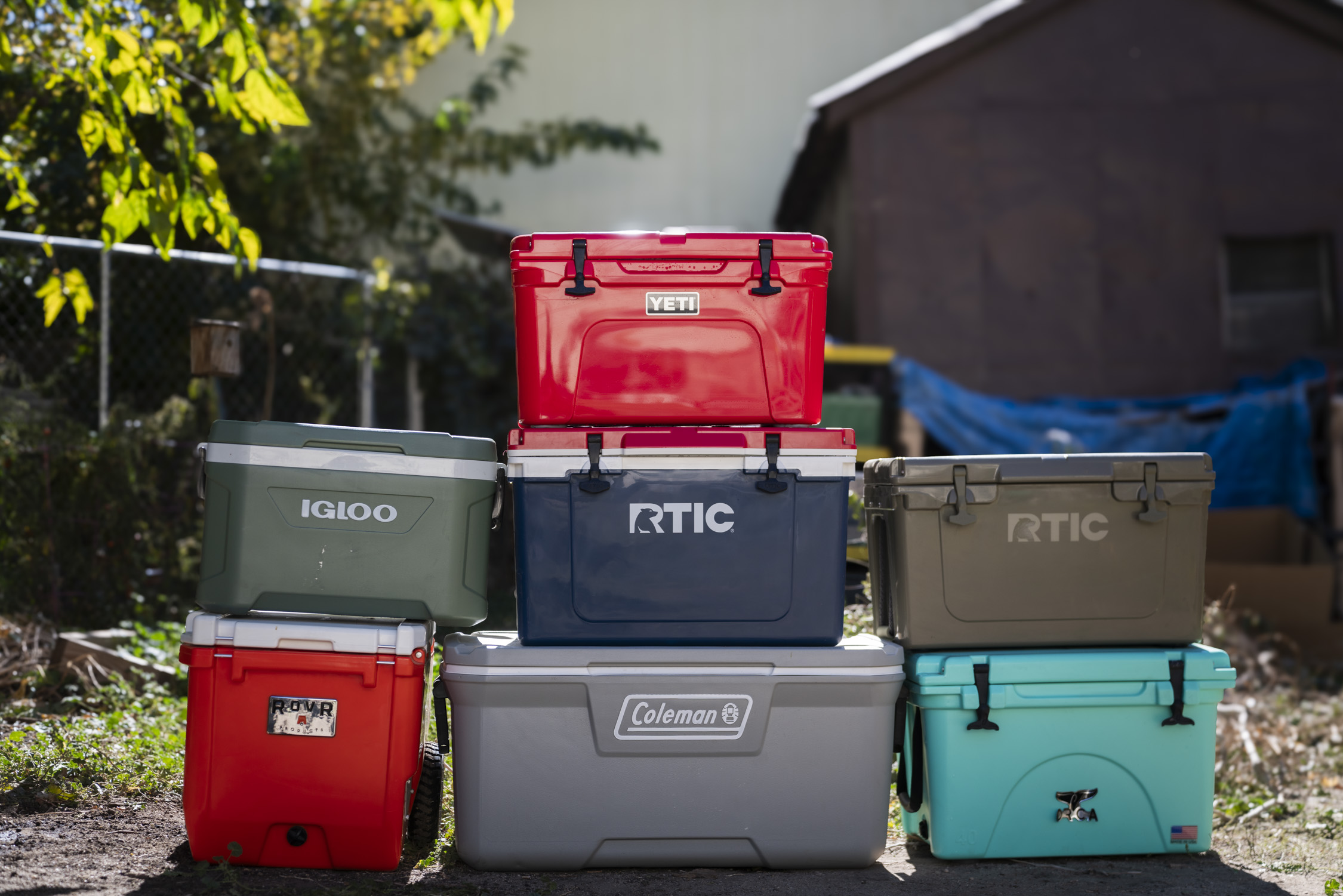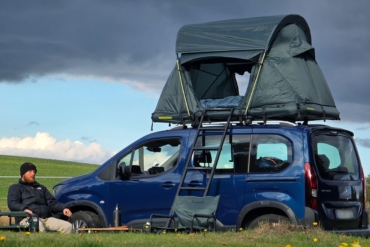[leadin]Wind and cold are foes of a camp stove. MSR attempts to overcome the elements with the re-branded WindBurner.[/leadin]

I’m hiking in Bella Coola, British Columbia. Goat Mountain and the trek up to the summit loom, as does my sleepiness from a late night around a campfire. The wind blows a steady 10mph, and I need coffee. I fire up the stove and in minutes have a rolling boil — coffee is served.
MSR touts the WindBurner stove system as windproof, ultra efficient, and easy to use. It aims to accomplish this through the use of a radiant burner and a “heat exchanger” that functions as a wind shield.
The stove has been on the market as the 1-liter WindBoiler since 2014. The brand changed the name and added a 1.8-liter model that will be available January 2016.
In the Bella Coola Valley and camping during high winds near Boulder, Colo., I put both stoves to the test.
Stove Test In Wind
The campsites were quite windy near Boulder, with 18mph tearing through camp and bending tents.
With the wind blowing it took a few tries to get the burner lit, but eventually it caught both with a lighter and with a spark from a fire starter on my knife.
The cooking pot with this system screws right onto the heat exchanger to save energy, so once the wire on top of the burner was glowing—a nice indication that the stove was indeed working—I twisted on the pot, easily and quickly.
Although the whole contraption is quite tall and potentially tippy in very high winds, the fit between the pot and the stove was extremely secure—I even gave it a few shakes, but nothing came disconnected.
-
Radiant Burner
The radiant burner is part of what makes the stove windproof—the other part is the heat exchanger, a fancy name for the wind blocker built into the lower third of the pot.
The radiant burner doesn’t use an open flame, but it has mesh discs sandwiched together that you light. This protects the fuel and flame from wind.
These mesh discs create a wide, almost flat burner head that is then welded into a burner cup that has about 1/2 inch lip of protection around the burner head. From there, the heat exchanger encloses the burner and the flame and locks onto the cooking pot. This minimizes any heat loss.
Boiling Water
MSR claims it takes 2:30 minutes in 8mph winds to boil 0.5 liters of water, and just 15 seconds more to boil in 12mph winds. In these kind of winds, some competing stoves won’t get enough flame to boil at all.
I found the claims to be true. The stove may actually be faster. Although not as precise as MSR’s internal testing, I used an app on my phone that measured wind speed, a fan, and the stove.
It took about two minutes to boil 0.5 liters at 8mph, and about two minutes and 15 seconds to boil 0.5L at about 12 mph.
Efficient Stove
The WindBurner is fueled by single-use isobutane canisters. The radiant burner is ultra-efficient, and it uses about 0.25 ounces of fuel per 0.5 liters of boiling water.
That translates to the ability to boil about eight liters of water with a four ounce fuel canister.
It is also easily controlled and burns at a nice low simmer when needed. With a sensitive pressure regulator, keeping soup warm while collecting wood was easy. The insulated cozy keeps food warm for 15 minutes after cooking. The one-liter pot is perfect for single person use, but could easily hold four cups.
Flaws: Tippy And Burn Risk
The system is tall with the fuel, the burner, and the wind-protected pot all stacking up high. It could easily tip in high winds. Both the one liter and the 1.8-liter systems come with a folding canister stand, which helps stabilize the structure. But if you are worried about weight, it’s the first thing that will stay at home.
Also, be wary when twisting off the pot from the burner—a slip of the finger could leave a nasty burn from either the exposed bottom of the pot or the burner itself.
Two WindBurner Sizes
Still relatively small and lightweight, the one liter system is perfect for an overnight in the front country, a few days in the backcountry, or simply a snowy snowshoe hike with a steaming drink halfway though.
The 1.8-liter will feed two to three campers, and it helps that there is at least one bowl already in the system.
WindBurner Stove Works In Wind
The MSR WindBurner lives up to its branding and works in windy, stove-challenging conditions. Both available sizes have more than enough space to heat a decent-size meal. It was easy to set up and connect, as well as ignite and keep lit.
Although both systems are a bit on the heavy side for light backpacking, they are fine for short backpacking adventures into the backcountry. The stove is impressive.
What You Get
It ships with an insulated pot with cozy and handle, a BPA-free drinking and straining lid, a radiant burner, a pressure regulator, an integrated, full-size bowl, a pack towel, and a folding canister stand
MSR WindBurner Stove
- Price: $129.95, 1L model; $149.95, 1.8L model
- Weight (without fuel): 15.5 oz (1L) and 19.9 oz (1.8L)
- Boil time: 2:30 minutes for .5 liters of water
- Fill volume: 3.5 cups for the 1L; about 6 cups for the 1.8L
- Available: 1L, now; 1.8L, spring 2016
